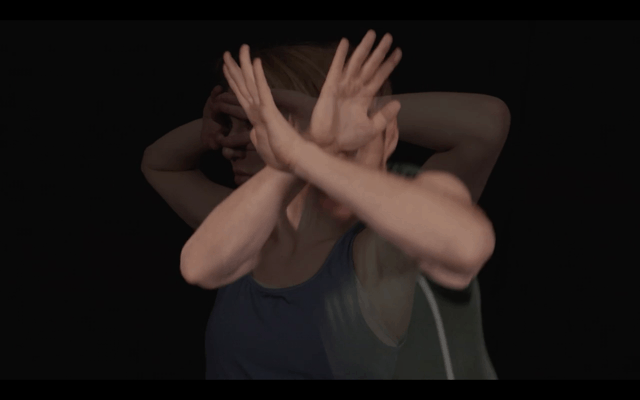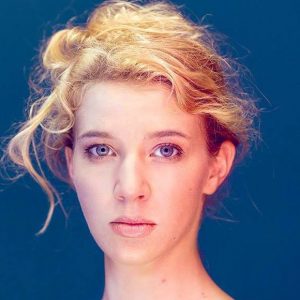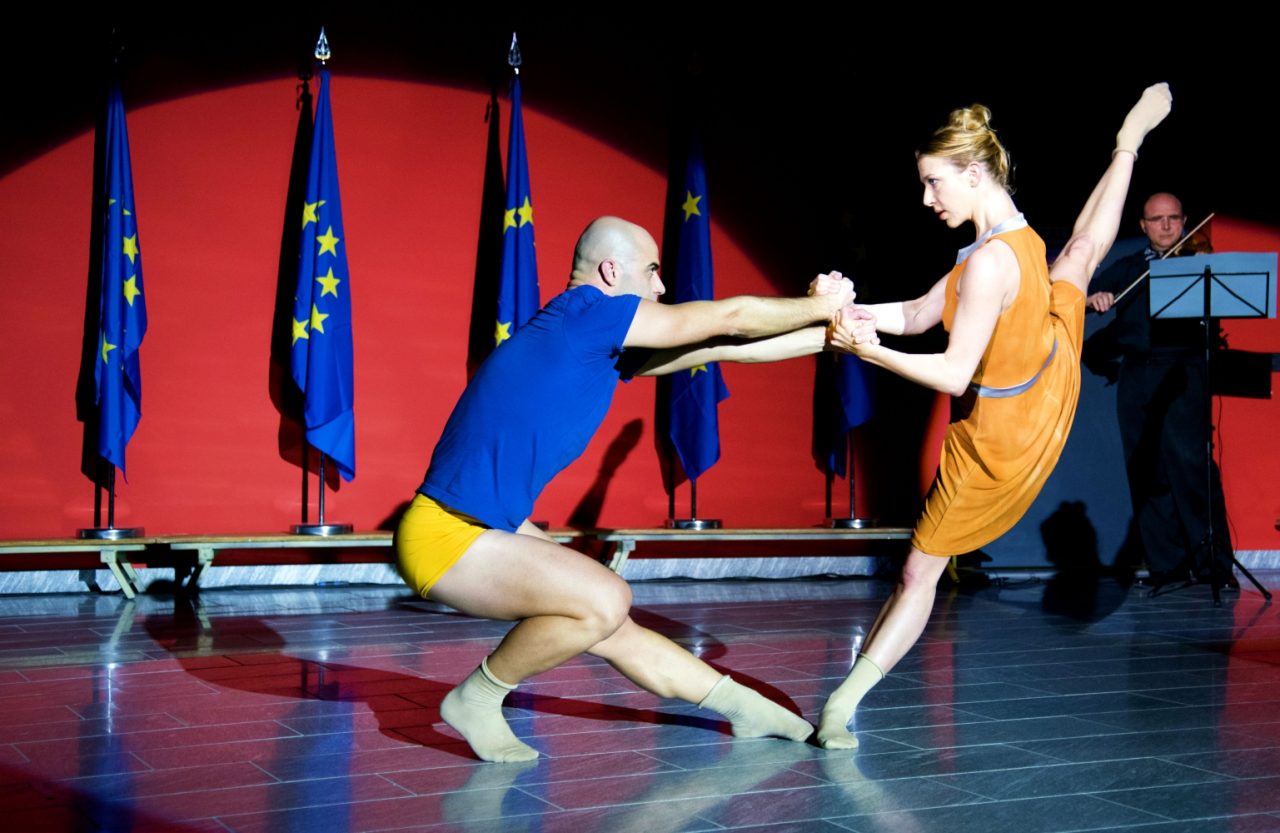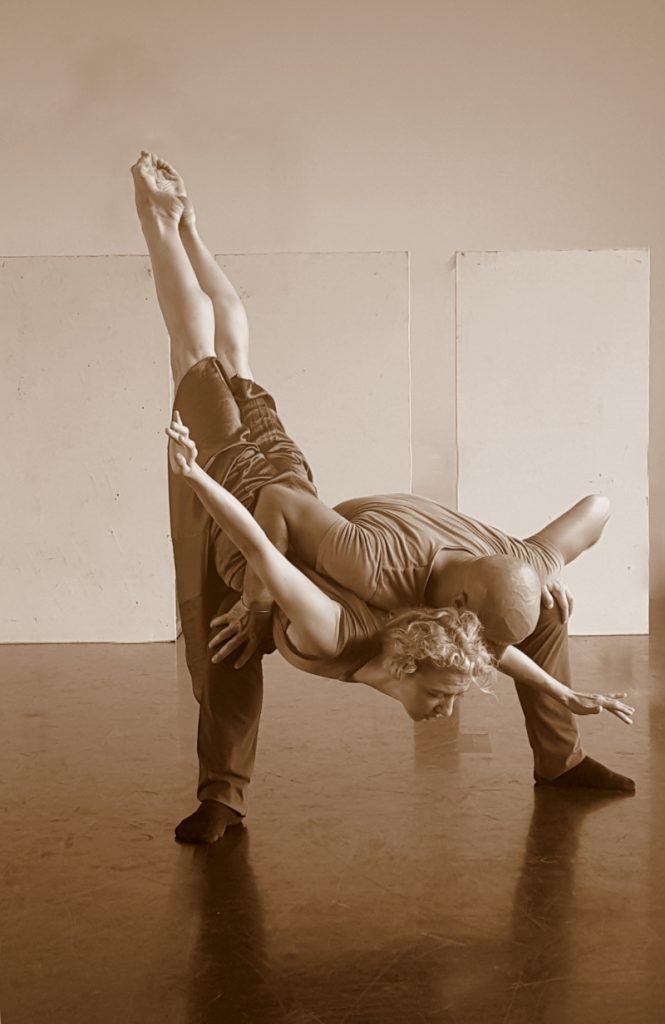Jan 28, 2017 | Science and Art
By Gloria Benedikt, IIASA Science and Arts Associate
This post was originally published in the magazine of the 2017 Vienna Science Ball.
Post-truth: the Oxford English Dictionary word of the year 2016 is a paradox for artists and scientists in particular. Post-truth proposes that there has been such a thing as truth in the past. Responsible scientists and artists are – and always have been – on a lifelong journey, driven by curiosity to discover what is not apparent. One group specialized in reason, the other in emotion, they are searching for insights to help society make better informed decisions, knowing that they are only a small part of a truth-searching journey that will continue infinitely. And while scientists try to be as exact as possible, knowing that 100% certainty does not exist, artists strive for perfection all their lives, knowing that perfection does not exist. For both the journey must be the goal. Until recently, this understanding was a fundament on which society could progress. What post-truth really seems to get at is that definite black and white, simple solutions based on instinct are increasingly challenging the nature of science, which is based on ranges and probabilities that are built on knowledge and reason.

A still from the short film by Gloria Benedikt and Christian Felber ©Patrick Zadrobilek
Public discourse over the causes for this development has increased significantly over the past months, identifying information overload and the loss of gatekeepers due to the digital revolution which seems to be leading people to create their own realities or cognitive ease. I’m confident that many of the problems on the surface, such as the fake news phenomenon will be addressed and solved in the near future. But how can and should science respond and contribute to the underlying issue?
If we are to accept that the new dividing lines appear between ‘rational progressives’ and ‘emotional regressives;’ between those who focus inward and backward, attempting to reject forces of globalization and those who focus outward and forward, embracing the forces of globalization; between those who are overwhelmed by interconnectedness, seeking simple short term solutions, and those willing to work on sustainable long term solutions; between those employing fear and hatred versus those advocating complicated but hopeful solutions,
I believe we need to extend our mission from knowledge production to developing compelling narratives, conveying positive, hopeful solutions that enable people to envision a sustainable future with heart and mind and overcome fear along the way.
This is where artists and scientists can come together, combining their strengths right now: united by the quest to understand how the world works, scientists finding data, artists embedding them in meaning. The short film on post-truth, shown at the Science Ball, is a small step on that journey. It developed out of an artistic urge to respond to the current discourse, which only seemed to touch on the surface of a more fundamental development. To shed light into these depths and find a different response, scientists contributed their views on the issue. Then, there are findings you cannot express with words, and that’s where non-verbal communication comes in. Here the medium is dance.
“Dance is one of the most beautiful forms of cooperation. Verbal language is an inefficient, incomplete form of communication that is prone to misunderstandings. Completing it by the physical, sensual, emotional, intuitive and spiritual spheres will provide a more holistic form of communication,” the economist and dancer Christian Felber observed a while back. He thus was a perfect match in realizing this project. May it now inspire you the audience to contemplate (post) truth from a different angle and the potential of science marrying art along the way.
Watch the full film
Gloria Benedikt is Associate for Science and Art at the International Institute for Applied Systems Analysis (IIASA). She is a graduate of the Vienna State Opera Ballet School 01’ and Harvard University 13’.
This article gives the views of the author, and not the position of the Nexus blog, nor of the International Institute for Applied Systems Analysis.
Aug 23, 2016 | Science and Art, Science and Policy
Gloria Benedikt was born to dance. She started at the age of three and since the age of 12 she has been training every day—applying the laws of physics to the body. But with a degree in government and an interest in current affairs, Benedikt now builds bridges between these fields to make a difference, as IIASA’s first science and art associate.
Conducted and edited by Anneke Brand, IIASA science communication intern 2016.

Gloria Benedikt © Daniel Dömölky Photography
When and how did you start to connect dance to broader societal questions?
The tipping point was when I was working in the library as an undergraduate student at Harvard University. I had to go to the theater for a performance, and thought to myself: I wish I could stay here, because there is more creativity involved in writing a paper than in going on stage executing the choreography of an abstract ballet. I realized that I had to get out of ballet company life and try to create work that establishes the missing link between ballet and the real world.
To follow my academic interest, I could write papers, but I had another language that I could use—dance—and I knew that there is a lot of power in this language. So I started choreographing papers that I wrote and rather than publishing them in journals, I performed them. The first work was called Growth, a duet illustrating how our actions on one side of the world impact the other side. As dancers we need to concentrate and listen to each other, take intelligent risks and not let go. If one of us lets go, we would both fall on our faces.
What motivated you make this career change?
We as contemporary artists have to redefine our roles. In recent decades we became very specialized, which is great, but we lost our connection to society. Now it’s time to bring art back into society, where it can create an impact. I am not a scientist. I don’t know exactly how the data is produced, but I can see the results, make sense of it and connect it to the things that I am specialized in.
How did you get involved with IIASA?
I first started interdisciplinary thinking with the economist Tomáš Sedláček who I met at the European Culture Forum 2013. A year later I had a public debate with Tomáš and the composer Merlijn Twaalfhoven in Vienna. Pavel Kabat, IIASA Director General and CEO, attended this and invited me to come to IIASA.
What have you done at IIASA so far?
For the first year at IIASA I created a variety of works to reach out to scientists and policymakers and with every work I went a step further. This year, for the first time I tried to integrate the two groups by actively involving scientists in the creation process. The result, COURAGE, an interdisciplinary performance debate will premiere at the European Forum Alpbach 2016. In September, I will co-direct a new project called Citizen Artist Incubator at IIASA, for performing artists who aim to apply artistic innovation to real-world problems.

Gloria and Mimmo Miccolis performing Enlightenment 2.0 at the EU-JRC. The piece was specifically created for policymakers. It combined text, dance, and music, and reflected on art, science, climate change, migration and the role of Europe in it. © Ino Lucia
How do scientists react to your work?
The response to my performances at the European Forum Alpbach 2015 and the European Commission’s Joint Research Centre (EU-JRC) was extremely positive. It was amazing to see how people reacted—some even in tears. Afterwards they said that they didn’t understand what I was trying to say for the past two days, but the moment that they saw the piece, they got it. Of course people are skeptical at first—if they were not, I will not be able to make a difference.

Gloria and Mimmo Miccolis rehearsing at Festspielhaus St. Pölten for COURAGE which will premiere at the European Forum Alpbach 2016.
What are you trying to achieve?
I’m trying to figure out how to connect the knowledge of art and science so that we can tackle the problems we face more efficiently. There are multiple dimensions to it. One is trying to figure out how we can communicate science better. Can we appeal to reason and emotion at the same time to win over hearts and minds?
As dancers we can physically illustrate scientific findings. For instance, in order to perform certain complicated movements, timing is extremely critical. The same goes for implementation of the Sustainable Development Goals.
Are you planning on doing research of your own?
At the moment I am trying something, evaluating the results, and seeing what can be improved, so in a way that is a type of research. For instance, some preliminary results came from the creation of COURAGE. We found that if we as scientists and artists want to work together, both parties will have to compromise, operate beyond our comfort zones, trust each other, and above all keep our audience at heart. That is exactly what we expect humanity to do when tackling global challenges. We have to be team players. It’s like putting a performance on stage. Everyone has to work together.
More information about Gloria Benedikt:
Benedikt trained at the Vienna state Opera Ballet School, and has a Bachelor’s degree in Liberal Arts from Harvard University, where she also danced for the Jose Mateo Ballet Theater. Her latest works created at IIASA will be performed at the European Forum Alpbach 2016 as well as the International Conference on Sustainable Development in New York.
www.gloriabenedikt.com
Fulfilling the Enlightenment dream: Arts and science complementing each other
Note: This article gives the views of the interviewee, and not the position of the Nexus blog, nor of the International Institute for Applied Systems Analysis.
Aug 27, 2015 | Communication, Science and Art
By Gloria Benedikt, IIASA Associate for Science and Arts

Gloria Benedikt speaks at “Towards a Sustainable Future,” Palais Niederoesterreich, March 2015. Photo: Matthias Silveri
“For the real human story, history must comprise both the biological and the cultural,” wrote biologist Edward O. Wilson in his 2014 book The Meaning of Human Existence. ”The convergence between those two great branches of learning (sciences and humanities) will matter hugely when enough people have thought its potential through”.
This elegantly summarizes why I find myself at IIASA. I’ve been splitting my life between the arts (working as a professional dancer) and academia (studying at Harvard University). Over time I started to make connections between seemingly opposing worlds: arts and science. Now my challenge as IIASA Associate for Science and Arts is to help bridge them.
Why is this important, and why now? Because the way the world is run assumes that human beings act rationally and that economic (material) well-being in itself is key in solving all major issues afflicting our world. We have focused on the biological and neglected the cultural; we assumed that satisfying basic needs to keep bodies functioning will keep people alive. In short, we looked at the body and overlooked the soul. Or as prominent Czech Economist Tomáš Sedláček framed it, “There were huge advances that were brought upon us thanks to science and also thanks to economics, but now I feel we are in a time where we see the limits of it. In the beginning, there was no analytics, just ethics. Today there is only analytics and no ethics.”

Gloria Benedikt (left) and Hussein Khadour (right) answer questions from young scientists at a dress rehearsal of their new performance, InDignity, at the Festspielhaus St. Poelten
There was a time when humanity was already closer in finding a balance between the two. It was called the Enlightenment. “The Enlightenment quest,” Wilson observed, “was driven by the belief that human beings can know all that needs to be known, and in knowing understand, and in understanding gain the power to choose more wisely than ever before.”
Then, for the next two centuries and to the present day, science and humanities went their own way. Complex reasons briefly summarized: albeit making good progress, scientists were nowhere close to meeting expectations and artists sought meaning in other more private venues.
Is there any value in resuming this quest of connecting arts and science now? Wilson argues that the answer is yes, “because enough is known today to make it more attainable than during its first flowering.” And yes, because the solutions of so many problems in modern life will depend on solutions for the clash of competing religions, the revival of moral reasoning and on adequate foundations of environmentalism.
So, how can this work in practice?

Gloria Benedikt and Mimmo Miccolis in GROWTH, Kennedy Center, Washington DC, July 2014 Photo: Morgan Marinoni
For starters we should be aware that there is a common foundation. Despite science and humanities being fundamentally different from each other in what they say and do, they are complementary to each other in origin, as they arise from the same creative process in the human brain. But there is more. “Good” science is data driven. Scientists are trained to present their findings in a neutral way. A scientist appealing to emotion is likely to be considered unprofessional.
Meanwhile, artists are masters of metaphors and of appealing to emotion. At the same time, the majority religiously avoids being explicit. “Good” art is not dogmatic. We prefer to leave it up to our audiences to find meaning for themselves.
In the past 150 years, we have seen that if we push our noble pursuits to the extreme, we risk losing our purpose because we lose our link to society. If people don’t understand how scientific findings matter to them and if artists are too scared or simply too wound up in their own world, and thus fail to articulate, our work falls short of its ultimate purpose: to serve society by revealing truths in the world around us so that people can make better-informed decisions on how to go about their work and lives and shape the direction of our planet and the over 7 billion people populating it.
Arts and science need to be free – in 2015, I believe this freedom lies in the ability to present our findings clearly and independently. This quest, coupled with a new sense of responsibility to communicate, is what can and should bring scientists and artists together in the coming years and decades. I, for one, am excited that IIASA has opened its doors for us to join hands so we can create a sustainable future together and perhaps fulfill Wilson’s vision of a second enlightenment along the way.
Please note: I use the terms ‘humanities’ and ‘arts’ interchangeably here. However the term humanities is of course technically broader, as it includes not only the creative arts, but also political theory & philosophy.
References
Wilson, Edward O. The meaning of Human Existence. New York: Norton & Company, 2014
Sedláček, Benedikt, Twaalfhoven. Arts Economics and the Irrational – A debate in 3 Acts. November 29th 2015. www.vimeo.com/120531313
Note: This article gives the views of the author, and not the position of the Nexus blog, nor of the International Institute for Applied Systems Analysis.








You must be logged in to post a comment.